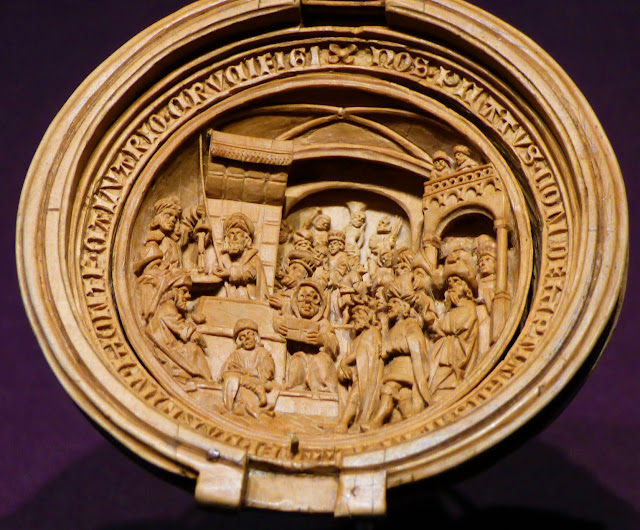Day 10: 26, November 2017, Sunday:
Highlight of the day was the Kunsthistorisches Museum.
We went to Hundertwasserhaus first thing in the morning
Hundertwasserhaus:
Famous as Vienna's "nature
and human-friendly" house, the odd (yet fascinating)
Hundertwasserhaus is well worth a visit. Designed by painter
Friedensreich Hundertwasser, this brightly colored landmark on the
corner of Löwengasse and Kegelstrasse was completed in 1985 and its
main occupants - unsurprisingly - are artists, intellectuals, and
creative types (much like the architect himself). Although the building can only be enjoyed from the outside, we
can explore the nearby Kunsthaus Wien, a complex of apartments
containing a terrace café and pop over to the similarly styled
shopping arcade). The design avoids straight lines, there are curves galore.
This is our tram stop schottentor
This is our tram stop schottentor
This is the Hundertwasser Kunsthaus Wien, a complex of apartments designed by him.


The Hundertwasser Village is located in the Kegelgasse directly across the apartment house. The building with a whole forest on the roof was also designed by Hundertwasser and was built due to the high visitor rush to the apartment house. The village is a small shopping center with a few souvenir shops, a cafe with a bar and some toilets in an interesting design.
village entrance here...
After the visit, we
considered going to upper Belvedere. Ended up going to the Museum
Quarter and to Kunsthistorisches Museum.
Kunsthistorisches Museum:
The Kunsthistorisches
Museum (English: "Museum of Art History", also
often referred to as the "Museum of Fine Arts") is the largest art museum in the country.
Housed in its festive palatial building on Ringstraße, it is crowned with an octagonal dome.
It was opened around 1891 at the same time as the Natural History Museum, Vienna, by Emperor Franz Joseph I of Austria-Hungary.
The two museums have similar exteriors and face each other across Maria-Theresien-Platz. Both buildings were built between 1871 and 1891.
We bought the combo ticket including the Imperial treasury and entered the decorative art side.
Totally AWESOME!
Ivory collection is fabulous.
These are prayer nuts, used as pendant in rosaries...
Our favorite Giam Bologna statues...there is no one point from where you can view these, we should go all round to enjoy the beauty from all angles
This is majolica, glazed pottery
Marble busts
Cherry wood etching
Lapidary... gem stone work
This gem is Lapis lazuli







Painting with gem stone powder

I'm continuing this report in the next post:




































































No comments:
Post a Comment